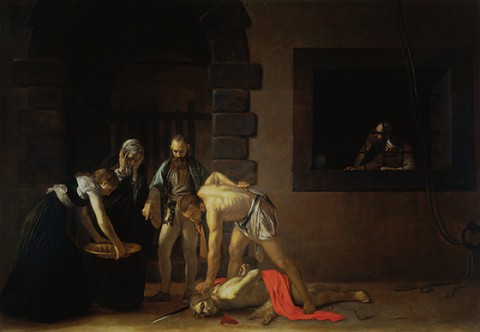The Beheading of St. John the Baptist, by Michelangelo Merisi da Caravaggio, 1608

Caravaggio (1571–1610) depicted the beheading of St. John the Baptist for the oratory chapel dedicated to the same subject in the Cathedral of St. John in Valletta on the island of Malta. Malta was the military outpost of the Roman Catholic faith that was entrusted to the Knights of St. John. After being exiled from Rome, Caravaggio fled to Malta in June 1607 in the hopes of receiving a papal pardon and of becoming a knight himself. The Knights commissioned Caravaggio’s largest painting (over 16 feet wide)—and the only work that bears his signature—to celebrate the feast day of their patron saint. John lies on the floor like an animal about to be slaughtered. The woolly hooves of his hair shirt are visible under the red cloth. The executioner has already killed John with his sword (located on the ground to the left of the body) and now prepares to slice off his head with a small knife. The jailer and an old woman witness the event. A servant girl, not to be mistaken for Salome, is identifiable by her apron and dress and holds a basket in which to bring the head back to Herod. Two prisoners have front-row seats at the gruesome event.





